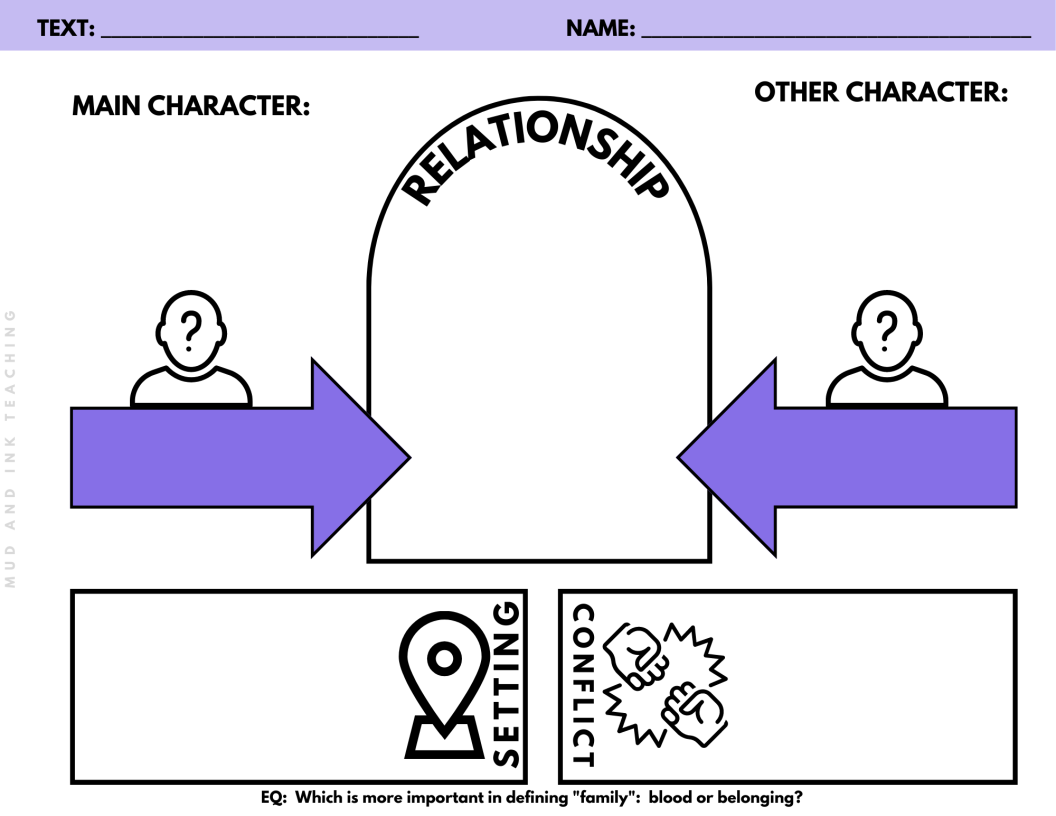
ADVENTUROUS TEACHING STARTS HERE.
Cultivating Critical Thinkers: My Approach to Teaching Literature
As an educator, I've always been passionate about instilling critical thinking skills in my students. It's a topic that I recently had the opportunity to reflect on during a professional development session, and I want to share with you the insights and strategies that I believe are essential for deep engagement in the classroom.
Life's Blueprint: An ELA Lesson Honoring Dr. Martin Luther King Jr.
Dr. King’s legacy is especially powerful in the ELA classroom: his words, his rhetoric, and the passion with which he speaks them is not only worthy of study in its own right, but the overlaps into our content area make the analysis of the layers of his work that much more rich and impactful. Here is a free lesson walkthrough for your middle or high school English class celebrating Martin Luther King Jr.’s birthday.
Planning a Novel Unit Reading Calendar
The art of pacing out the reading during a novel unit can be tricky, so we’re going to take some time today to talk through the process. Whether you’re teaching a classic or a contemporary YA title, there are special considerations to be made for the design of your calendar and how we backwards plan for ELA. Let’s jump in!
5 Ways to Look at the Magic of Clarisse in your Fahrenheit 451 Unit
Now, more than ever, we need to have Fahrenheit 451 in front of our students. From the new onset of AI technology to the daily threats of our intellectual and academic freedom, Fahrenheit provides windows, mirrors, and doors into our present and our future. While Montag’s transformation, the working symbolism, and general dystopian world-building are all incredibly important pieces to focus on, I’d like to argue that it’s possible we need Clarisse McClellan the most.
55+ Books for Your Next American Dream Unit for High School ELA
One of my favorite units to teach is a unit that focuses on the American Dream. It’s the perfect way to hone in on complex characterization and the layers of complexity are widely accommodating for skill level. Whether you’re building the unit to teach as a whole class novel unit or as a literature circles unit, this book list is here to save you time and energy in narrowing down the search.
Teaching Short Story Units with a Modern, Contemporary Twist in Secondary ELA
If you’ve ever found yourself searching the internet for “contemporary short stories” or “modern short stories” because you’re tired of teaching the same classic stories over and over again, I have THE HACK to change everything for you!
How to Create Book Club Magic Using Essential Questions {Part Two}
Lackluster literature circles? Boring book clubs? The remedy: lose traditional “role” sheets, declare freedom from organization by topic or genre, and build essential question-focused literature circles or book clubs instead. An EQ as the throughline for your lit circle/book club unit kicks up the impact that comes from having kids talk about what they read in a way that just does not happen with any other method. Here’s why…
How to Create Book Club Magic Using Essential Questions {Part One}
Lackluster literature circles? Boring book clubs? The remedy: lose traditional “role” sheets, declare freedom from organization by topic or genre, and build essential question-focused literature circles or book clubs instead. An EQ as the throughline for your lit circle/book club unit kicks up the impact that comes from having kids talk about what they read in a way that just does not happen with any other method. Here’s why…
Books for Your Next Unit on Relationships for Middle and High School ELA
One of my favorite units to teach is a unit that focuses on relationships. It’s the perfect way to hone in on complex characterization and the layers of complexity are widely accommodating for skill level. Whether you’re building the unit to teach as a whole class novel unit or as a literature circles unit, this book list is here to save you time and energy in narrowing down the search.
5 Tips for Creating and Implementing a Successful Unit Plan in Secondary ELA
Unit planning can feel overwhelming, but this guest post provides practical, easy steps for getting started on any unit. Follow Samantha’s guidance as she demonstrates the ways in which she organizes her “The Crucible” unit here!
Middle Grade Books Matter
Middle school reading can be a powerful way to expose students to issues in the world around them. It’s also one of the best ways for students to make connections between academics and their own lives. In this guest post, you’ll get three thematic book lists to fill up your Amazon cart.
Three Reasons You Should be Teaching A Thousand Splendid Suns
If you have a world literature course, or any upperclassman English course for that matter, A Thousand Splendid Suns should be in your curriculum. Full stop. This is by far and away one of my personal and my students’ favorite novels and if you’re not teaching it, you’re missing out. There are so many things about this novel unit that are perfect for skill-building and ripe for deep, meaningful discussion, but if I had to boil it down to my top three, then here they are…














